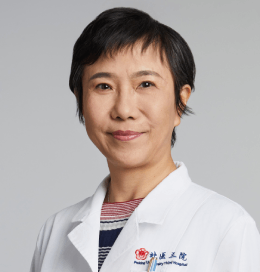
Education
10/1978 – 7/1983: Department of Basic Medical Sciences, Beijing Medical College, Bachelor Degree.
9/2000 – 7/2003: Department of Pharmacology, School of Basic Medical Sciences Peking University, Master Degree.
10/1992 – 7/1995: Department of Physiology and Biophysics, University of Tennessee (Memphis), USA, Post-doctor.
Work Experience
8/1983 – 5/1985: Pharmacology Laboratory, Cancer Hospital Chinese Academy of Medical Sciences, research Intern.
6/1985 – 9/1992, 9/1995 – hitherto: Department of Plastic Surgery, Peking University Third Hospital, now is professor, doctoral supervisor.
8/2002 – 8/2018: in charge of Center of Basic Medical Research of Peking University Third Hospital,as director or vice director.
Research Field
Would Repair and tissue transplantation
Abstract submitted for the 5th International Keloid Symposium
The pathogenesis of keloids has been associated with metabolic reprogramming from oxidative phosphorylation to aerobic glycolysis (Warburg effect). Lactate is a metabolite of the Warburg effect that can induce lactylation and stimulate chromatin gene transcription. Hypoxic microenvironments may promote the development of keloids by enhancing the Warburg effect. However, whether excessive lactate production causes lactylation in keloid fibroblasts (KFb) and whether lactylation, proliferation, and collagen deposition can be reduced by inhibiting glycolysis in KFb are still unknown. Distinct from tumor therapy, which completely kills tumor cells, this study aimed to improve cellular function and reduce collagen synthesis in KFb by inhibiting glycolysis under normoxic and hypoxic (simulating a hypoxic microenvironment in vivo) conditions. We found that the expression of ENO1 in keloid tissue and KFb was significantly higher than that in normal skin tissue (P < 0.05). The mRNA and protein expressions of ENO1 in KFb were significantly higher than those in NFb under normoxia and hypoxia condition, respectively (P < 0.05), and hypoxia would stimulate the expression of ENO1 in KFb and NFb (P<0.05). The mRNA and protein expressions of Glut1, LDHA, and COL1 in KFb were significantly decreased after inhibiting the expression of ENO1 compared with the negative control group under normoxia and hypoxia conditions, respectively (P < 0.05). Glucose consumption and lactic acid production, extracellular acidification rate, non-glycolytic acid, glycolysis, glycolytic capacity, and glycolytic reserve were significantly decreased (P < 0.05); the mitochondrial basal respiration, maximal respiration, and OCR/ECAR values were significantly higher than the control group (P<0.05). Cell proliferation, migration, and invasion were also significantly inhibited (P < 0.05). Furthermore, after inhibiting the expression of ENO1, the phosphorylation of PI3K/ AKT pathway in keloid fibroblasts was significantly decreased (P > 0.05). Our study confirmed for the first time that lactylation occurred in KFb, and inhibiting the overexpression of the glycolytic enzyme ENO1 in KFb inhibited glycolysis and ameliorated respiration, cell viability, migration, invasion, collagen synthesis, lactate production, and lactylation under normoxic and hypoxic conditions. Our results provide new insight into the pathogenesis keloids and reveal novel treatment strategies.
* This work was supported by the National Natural Science Foundation of China (grant number 81772090 and 82172216).










